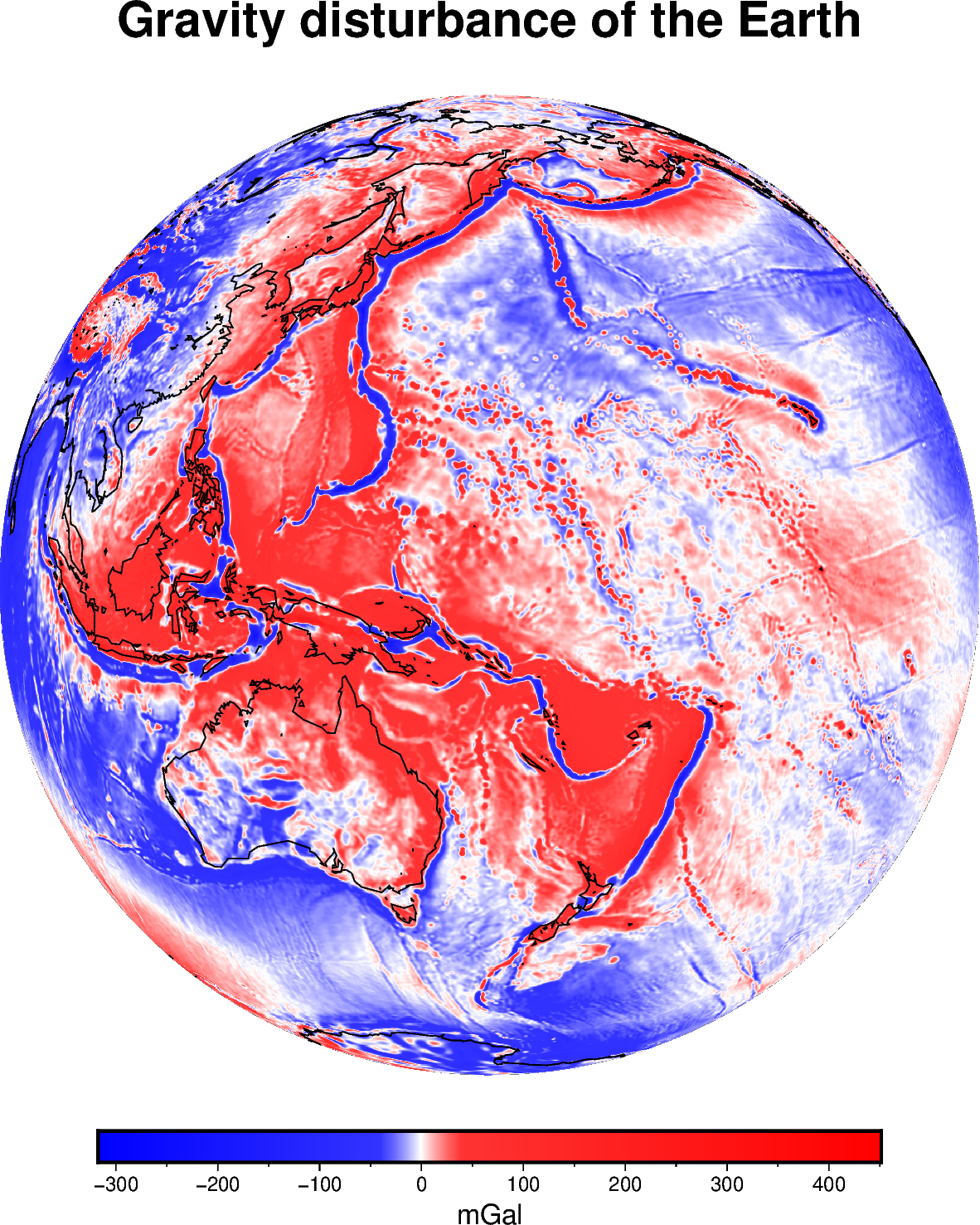Note
Go to the end to download the full example code
Gravity Disturbances#
Gravity disturbances are the differences between the measured gravity and
a reference (normal) gravity produced by an ellipsoid. The disturbances are
what allows geoscientists to infer the internal structure of the Earth. We’ll
use the boule.Ellipsoid.normal_gravity function from boule to
calculate the global gravity disturbance of the Earth using our sample gravity
data.

<xarray.Dataset> Size: 28MB
Dimensions: (longitude: 2161, latitude: 1081)
Coordinates:
* longitude (longitude) float64 17kB -180.0 -179.8 -179.7 ... 179.8 180.0
* latitude (latitude) float64 9kB -90.0 -89.83 -89.67 ... 89.67 89.83 90.0
height (latitude, longitude) float32 9MB 1e+04 1e+04 ... 1e+04 1e+04
Data variables:
gravity (latitude, longitude) float64 19MB 9.801e+05 ... 9.802e+05
grdimage [WARNING]: Longitude range too small; geographic boundary condition changed to natural.
import boule as bl
import ensaio
import pygmt
import xarray as xr
# Load the global gravity grid
fname = ensaio.fetch_earth_gravity(version=1)
data = xr.load_dataset(fname)
print(data)
# Calculate normal gravity using the WGS84 ellipsoid
ellipsoid = bl.WGS84
gamma = ellipsoid.normal_gravity(data.latitude, data.height)
# The disturbance is the observed minus normal gravity (calculated at the
# observation point)
disturbance = data.gravity - gamma
# Make a plot of data using PyGMT
fig = pygmt.Figure()
pygmt.grd2cpt(grid=disturbance, cmap="polar", continuous=True)
title = "Gravity disturbance of the Earth"
fig.grdimage(
region="g",
projection="G160/0/15c",
frame=f"+t{title}",
grid=disturbance,
cmap=True,
)
fig.coast(shorelines="0.5p,black", resolution="crude")
fig.colorbar(cmap=True, frame=["a100f50", "x+lmGal"])
fig.show()
Total running time of the script: (0 minutes 4.290 seconds)